A unified system for labelling chemicals called GHS has been introduced out of concern for the health and safety of people and the environment. The hazard type pictogram is an easily recognisable and understandable graphic form of warning users of the dangers that hazardous chemical substances or mixtures may pose.
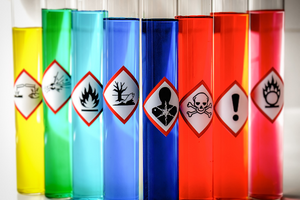
In a globalised marketplace, the number of products containing substances and mixtures that can negatively impact human health, infrastructure and the environment continues to grow. Although chemicals have been approved for marketing, they should be used and stored with caution. Special hazard pictograms have been developed to bypass the language barrier and clearly suggest the hazards of chemicals to consumers.
In the European Union, the Globally Harmonised System of Classification and Labelling of Chemicals, originally developed by UN experts, was adopted in 2009. It replaced the symbols used previously and today, it is used in more than 65 countries around the world. The European regulation is abbreviated as CLP (Classification, Labelling and Packaging).
The CLP/GHS system uses nine unified graphic symbols that correspond to hazard classes and categories. Each has a corresponding numerical designation of hazardous chemical substances, from GHS01 to GHS09.
According to the current system, the hazard pictogram is a diamond with a red border. On a white background inside it, there is a black symbol that implicitly represents the type of risk. Individual symbols show, among others, a skull and crossed bones, an exclamation mark or a flame.
Appropriate pictograms are included on the product label in a prominent place on the packaging. They should be accompanied by relevant hazard statements, precautionary statements and required signal words.
The applicable hazard pictograms on the packaging of chemical substances or mixtures refer to physical hazards, health risks and environmental hazards. The following messages can be found in the different classes:
 |
GHS01 – explosive substances; |
 |
GHS02 – flammable substances; |
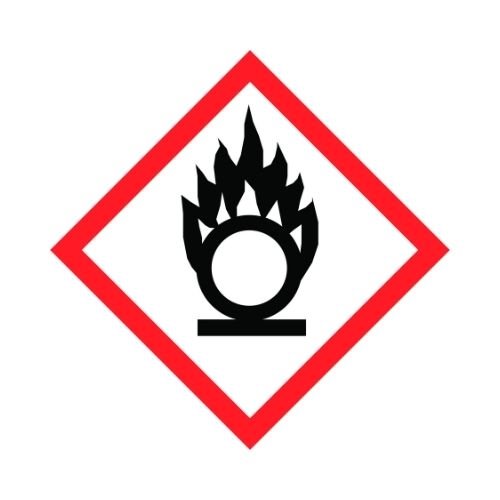 |
GHSO3 – oxidizing substances; |
 |
GHS04 – gases under pressure; |
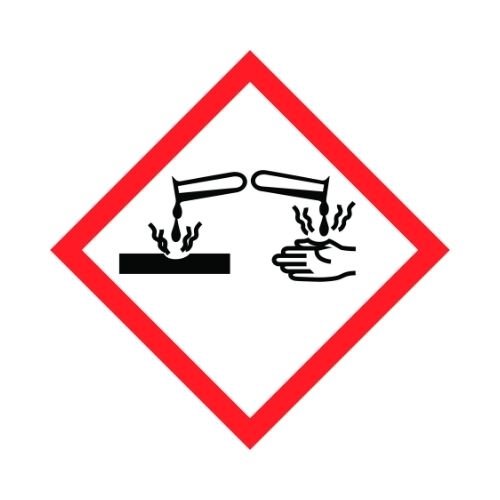 |
GHS05 – metal corrosive substances, caustic substances; |
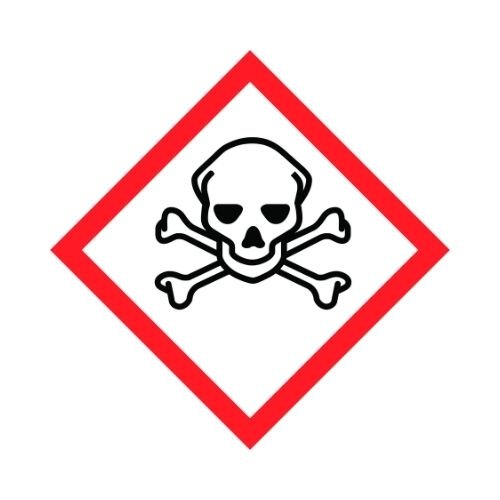 |
GHS06 – toxic substances; |
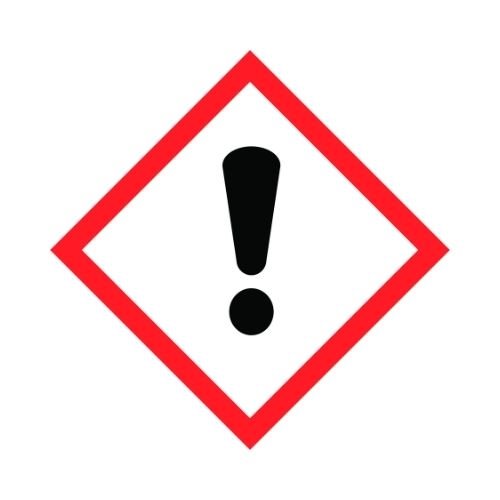 |
GHS07 – irritant substances; |
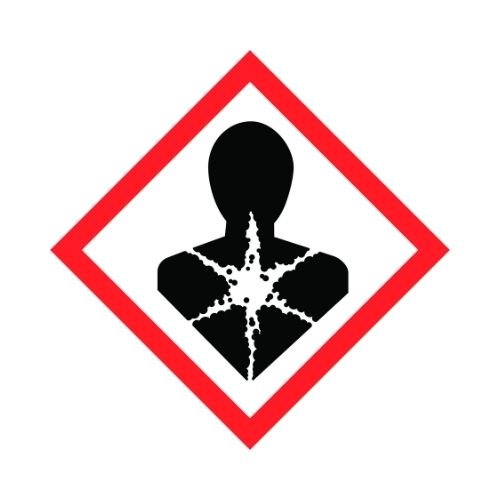 |
GHS08 – carcinogenic/mutagenic substances; |
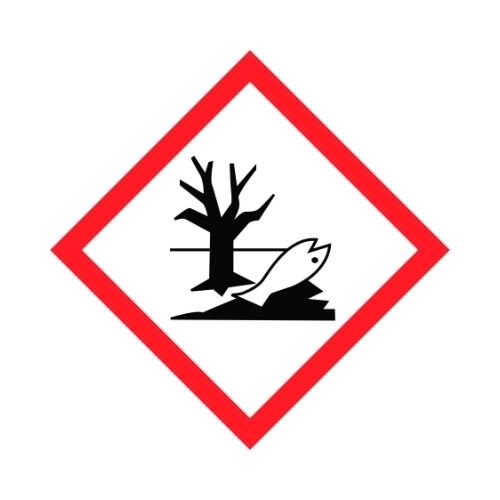 |
GHS09 – substances harmful to the aquatic environment. |
To simplify and at the same time indicate the risk hierarchy of the individual symbols, priority rules have been established for the hazard pictograms that appear on the packaging label of a chemical substance or mixture. This is intended to reduce the number of pictograms on the label while making it more readable and understandable to the viewer. The fewer symbols on the label, the greater the chance of their impact!
Today’s manufacturers assume that a conscious consumer reads the label before buying and using the product. In addition to providing instructions on how to use the product, the label should communicate its basic purpose and safety precautions. The warning signs of chemical substances are meant to actively attract the user’s attention and encourage appropriate reflection.
For example, the skull pictogram indicates acute toxicity after ingestion, application to the skin, or inhalation. The user should, therefore, use appropriate protection of the body and the respiratory tract when handling this product. The hazard pictogram depicting a dead fish and a tree is intended to prevent leaching the product into surface water, deep water, or being poured directly into the soil.
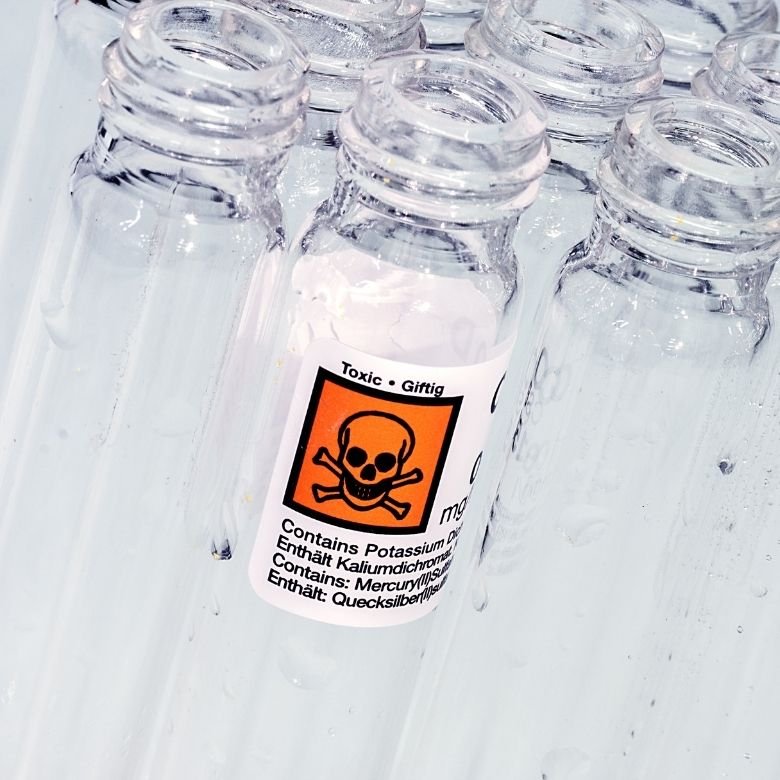
Should the average consumer pay attention to the labelling of hazardous chemicals in their everyday shopping? As it turns out, yes. Many of the commonly used cleaning products contain chemicals that pose a real threat to household members’ health and the environment. This is especially important in the case of children who should never have access to products with pictograms indicating the types of hazards with a description.
Another important category is chemical plant protection products. These include herbicides, insecticides and fungicides. Hazardous substance labels are also often found on drain cleaners, barbecue cleaners, radiator fluids, adhesives and varnishes. In each of these cases, a distinctive hazard pictogram with a red border should alert the user about the danger.
A prerequisite for the effectiveness of the introduced CLP/GHS labelling system is building an appropriate level of awareness in society. However, education should not only concern the message conveyed by the individual pictograms but also the potential consequences of improper handling of chemicals. Consumer responsibility in this area will translate into broad social, health and environmental benefits in the long run.